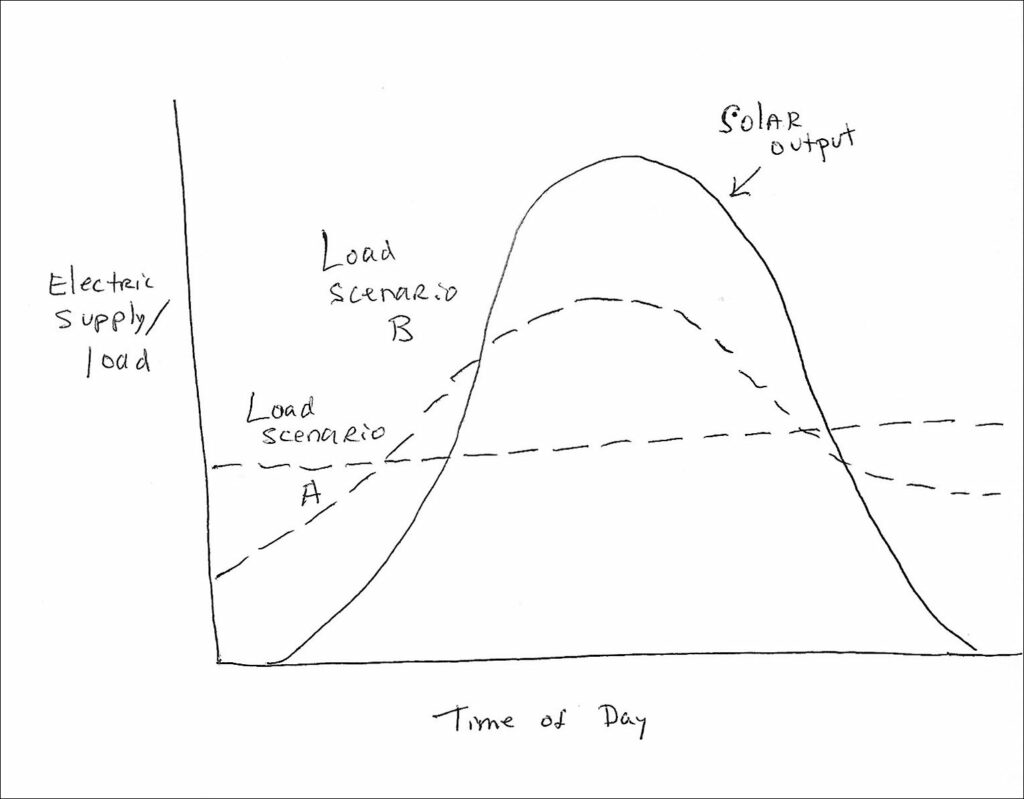 Dominion Energy has announced the construction of six new solar farms — three in Virginia and three in North Carolina – to offset the electricity demand of Facebook data centers in the two states. The 590 megawatts of new renewable energy generation will be enough to power 147,000 homes at peak output.
Dominion Energy has announced the construction of six new solar farms — three in Virginia and three in North Carolina – to offset the electricity demand of Facebook data centers in the two states. The 590 megawatts of new renewable energy generation will be enough to power 147,000 homes at peak output.
The partnership will support Dominion’s goal of having 3,000 megawatts of new solar and wind energy in operation or under development by 2022 and Facebook’s goal of supporting its global operations with 100% renewable energy by the end of 2020. (See the press release here.)
In the abstract, I’m all in favor of generating electricity with clean, renewable energy sources like solar. But I’m still trying to understand the implications of the solar rush for grid stability and ratepayers.
Steve Haner has illuminated discussions inside the State Corporation Commission on the issue of solar “capacity.” Given local meteorological conditions, will solar farms generate as much electricity as Dominion says they will? What happens if solar generation falls short of projections? Who pays?
I’m also wondering how well solar output matches the demand curve of data centers. Solar farms generate electricity when the sun shines, reaching peak output when the sun is highest in the sky and tailing off in the evening. Data centers consume electricity 24/7. I doubt data centers consume electricity at a constant rate throughout the day. Presumably, data-center electric load increases during the day and evening when people are awake and doing stuff. But that’s only a surmise.
There is considerable discussion online about total electricity demand from data centers, but none that I could readily find about the time-of-day variations in electric load. Is data-center electricity consumption relatively steady throughout the day, as illustrated below in Load Scenario A in my crude, back-of-the-envelope sketch, or does it peak during the day, as shown in Load Scenario B? Alternatively, does the load curve look like something else entirely?
Any gap between solar generation and electric load must be made up by other energy sources — nuclear, coal, or natural gas. In Load Scenario B the load curve comes much closer to matching solar output than in Load Scenario A. The smaller the gap, the less the burden on other energy sources. The bigger the gap, the bigger the burden. (As an aside, the sun doesn’t shine every day. The load-generation gap gets wider in cloudy weather.)
One obvious question is, who pays to maintain the back-up capacity to keep Facebook’s data centers running when the solar farms are idle?
Here’s the partial information that the Dominion press release provides:
Dominion said the six projects represent “ring fence facilities” that will operate solely for Facebook, which will pay for them through renewable energy certificates it will purchase from the regional transmission system that operates in the Mid-Atlantic area. The six solar projects will generate 350 megawatts of power, in addition to the 240 megawatts that the two pending Surry plants will produce. …
Facebook is pushing to meet all of the company’s power demands with renewable energy by the end of next year. It pledged $250 million to pay for new renewable energy projects to serve the first phase of a $1 billion data center under construction in eastern Henrico.
Facebook says it is pushing to meet “all” of its power demands with renewable energy? Really? To paraphrase Bill Clinton, it depends on what the meaning of “all” is. It’s one thing to generate enough solar electricity to match the total number of kilowatt hours consumed by Facebook data centers over the course of a year. It’s a very different thing to generate solar electricity when Facebook is actually using the electricity. The value of a kilowatt hour electricity generated depends upon how well it matches up with demand at different times of day and under different meteorological conditions.
Will Facebook-backed solar projects generate electricity when Facebook is using it, or will the projects generate electricity far in excess of Facebook’s needs during certain times of the day and dump the rest into the wholesale electric market while relying upon other sources during periods of low solar output? Will Facebook be swapping low-value electricity for high-value electricity, and will it pay the difference?
Bacon’s bottom line: Is Facebook paying the full cost of its green energy policy, or is it shifting some of the cost to other rate payers? Are Virginians subsidizing one of the world’s most profitable companies? I don’t have a clue. But no one seems to be asking the question, much less providing answers.



